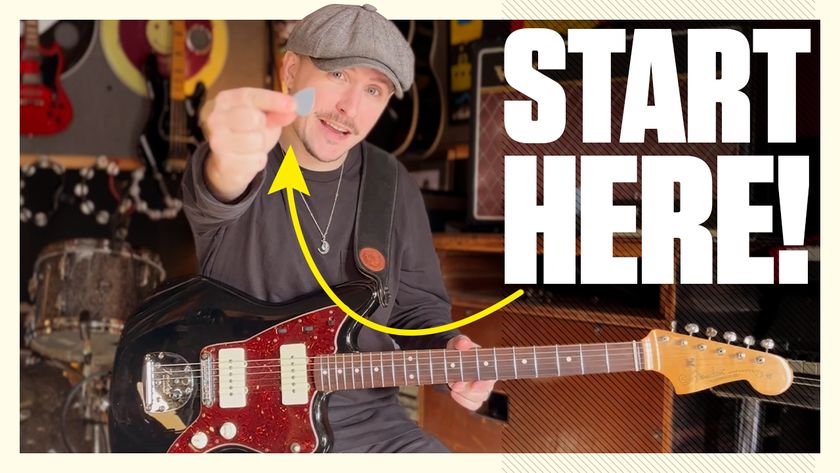A Beginner's Guide to Quintuplets
Being able to accurately play quintuplet licks and sequences will add dynamics to your playing and give you more interesting soloing options.

Recently, I've been experimenting with five-note patterns, or quintuplets.
A quintuplet is when you fit five notes where you'd usually fit four. For example, you can fit 20 16th-note quintuplets in a normal bar where you'd play five evenly spaced notes for each beat.
These rhythms can be challenging, so I wanted to give you some exercises and licks that will help you develop a "feel" for them.
When you first try to play quintuplets, you'll most likely find it difficult to evenly space each note. For this reason, when learning quintuplets you must take a very methodical and disciplined approach.
Being able to accurately play quintuplet licks and sequences will add dynamics to your playing and give you more interesting options when composing solos.

The first exercise is to play the first five notes of the A minor scale looped to a metronome. This exercise can be challenging due to the odd number of notes in each grouping. This means your picking hand will have to alternate between starting each beat with a down and up stroke. I suggest using strict alternate picking for this exercise.

Here's a slightly more musical idea using the same A minor scale but playing in different positions along the same two strings. When you've mastered this exercise, try playing the the scale in every possible position on these two strings.

Here's a repetitive idea using an F# minor pentatonic scale. I simply descend through the scale five notes and repeat the same pattern every beat. There are two possible ways to play this phrase. The first is to arrange the notes within a regular pentatonic shape as demonstrated in the first half of the bar. The second is play the final A note on the D string as demonstrated in the second half of the bar. I gave you these two options because you might find one of them easier. Practice them both and see which one you prefer.

Here's a single-string pattern based off the E minor scale. This is very simple but can sound interesting in a solo. I find this lick difficult at higher tempos even though technically it's easier than the previous examples. It's a sort of "tongue twister" for your fingers.

To end, try playing an entire A minor scale sequenced in quintuplets all the way up and down the neck. It will take a lot of practice to memorize each position, but after mastering it,you should have a good understanding and feel for quintuplets.
Cheers!
Will Wallner is a guitarist from England who now lives in Los Angeles. He recently signed a solo deal with Polish record label Metal Mind Productions for the release of his debut album, which features influential musicians from hard rock and heavy metal. He also is the lead guitarist for White Wizzard (Earache Records) and toured Japan, the U.S. and Canada in 2012. Follow Will on Facebook and Twitter.
Get The Pick Newsletter
All the latest guitar news, interviews, lessons, reviews, deals and more, direct to your inbox!




![Joe Bonamassa [left] wears a deep blue suit and polka-dotted shirt and plays his green refin Strat; the late Irish blues legend Rory Gallagher [right] screams and inflicts some punishment on his heavily worn number one Stratocaster.](https://cdn.mos.cms.futurecdn.net/cw28h7UBcTVfTLs7p7eiLe-840-80.jpg)








